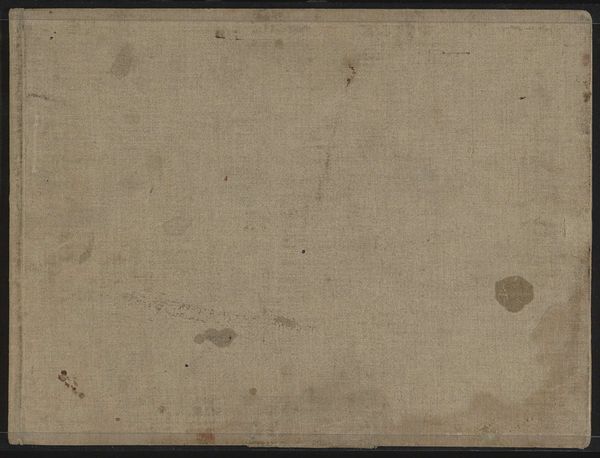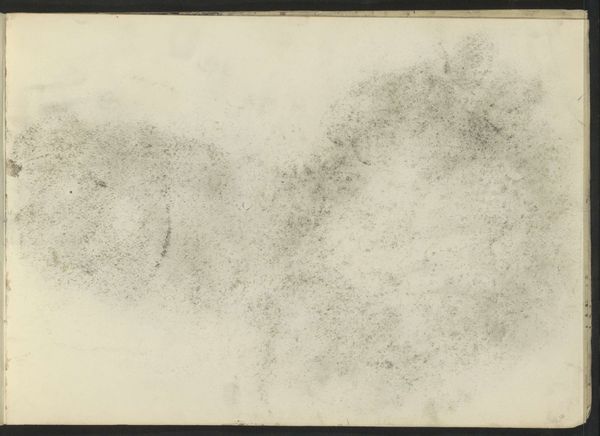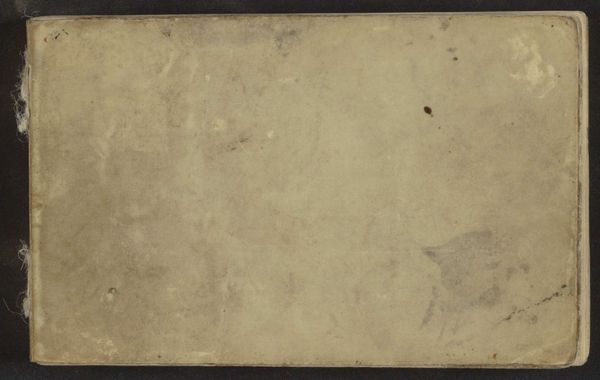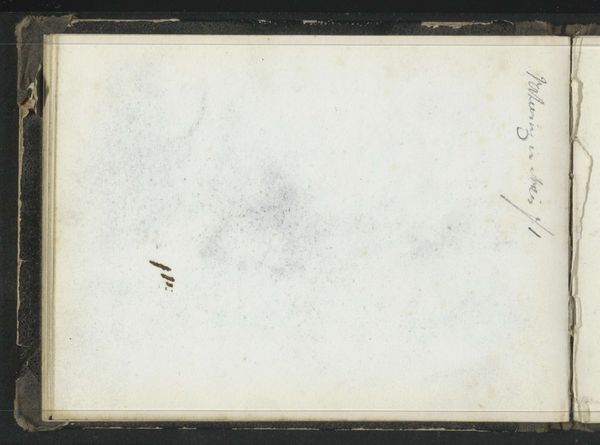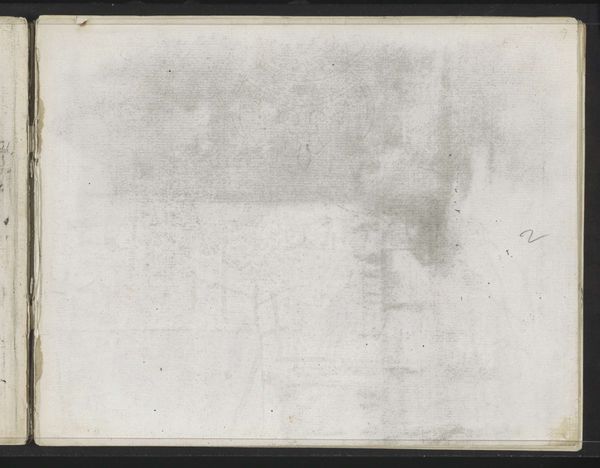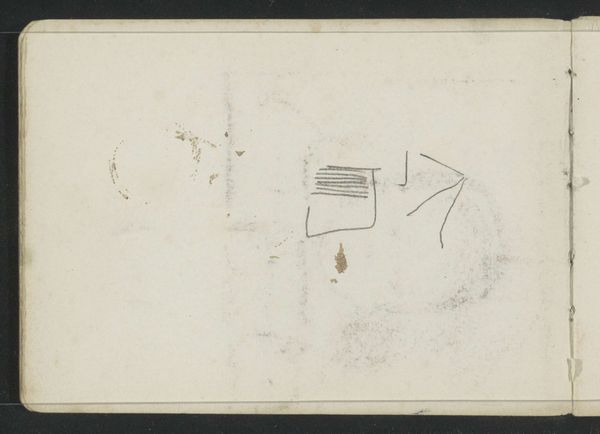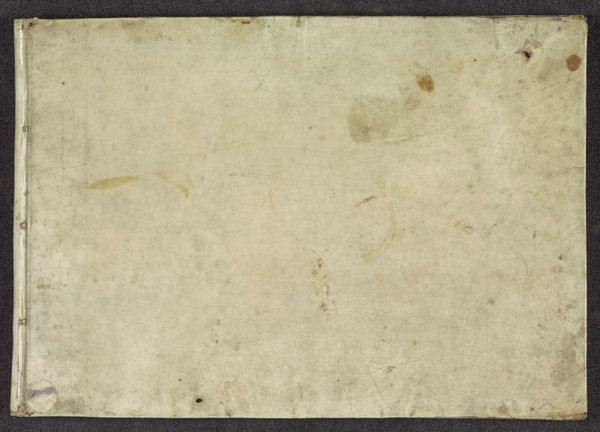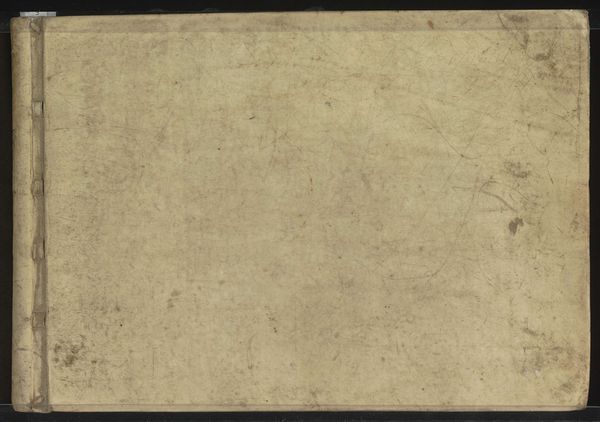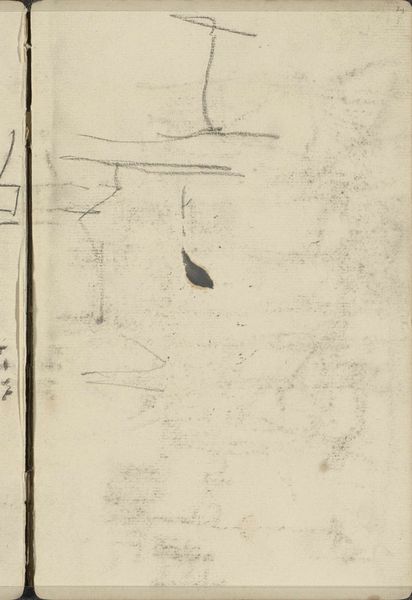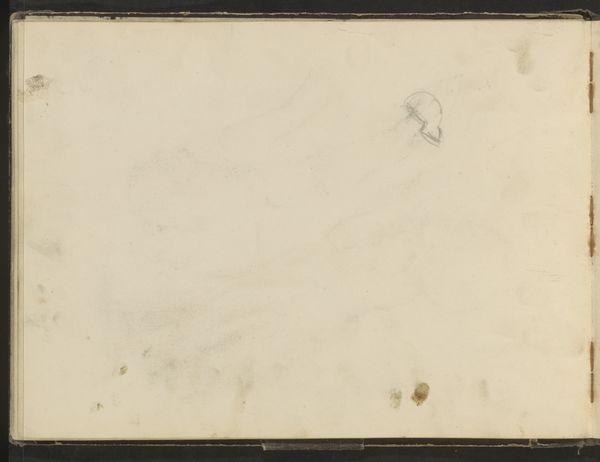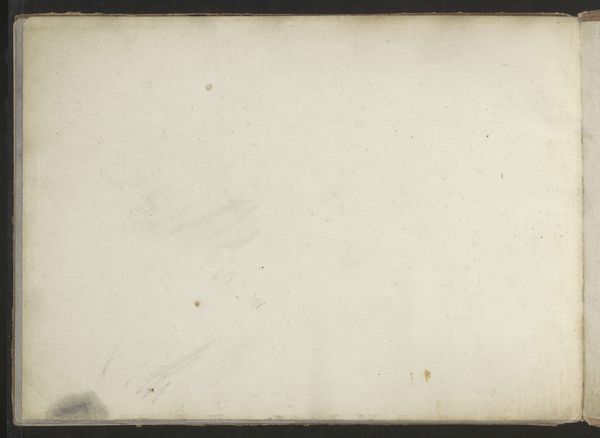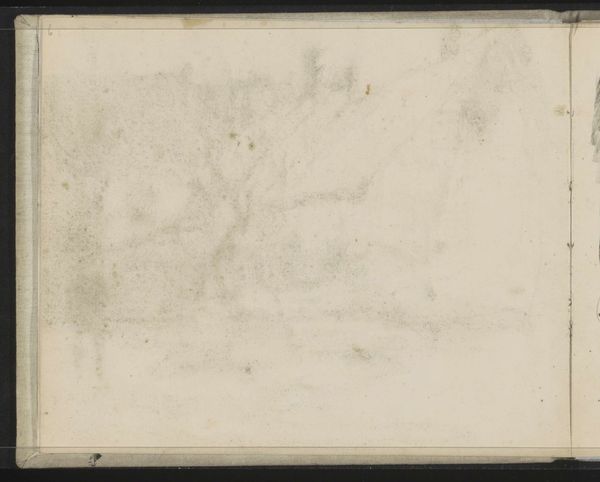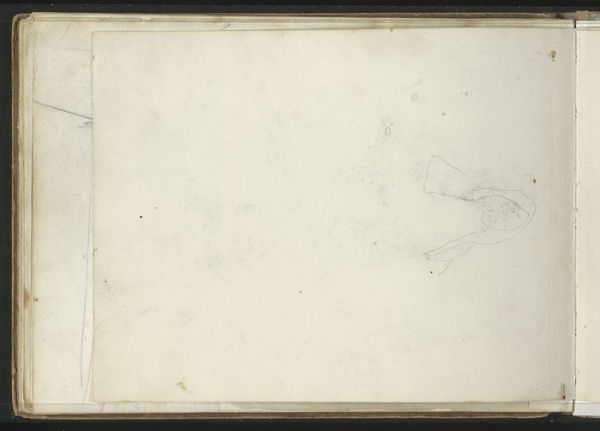
Copyright: Rijks Museum: Open Domain
Editor: Here we have Willem Witsen's "Abklatsch van de krijttekening op pagina 3," an ink drawing on paper made sometime between 1897 and 1910, currently held at the Rijksmuseum. The texture and blotches give the work a transient, almost ethereal mood, like a faded memory. What stands out to you? Curator: What I see is a document of artistic practice and experimentation, reflecting the shifting social role of the artist at the turn of the century. Consider how the drawing's existence *as* a page in a sketchbook transforms its potential public role. This wasn't necessarily intended as a standalone piece for exhibition. Editor: So, its "public" exists mainly within the context of Witsen's studio practice? Curator: Precisely. This piece offers us a glimpse into his creative process. It raises questions about artistic intentionality and reception: how does an artist’s private exploration become public art? The blotches and faded lines might have even become part of the artistic language, pushing against academic rigidity. Editor: That's interesting; I hadn't considered the performative aspect. The impressionistic style reinforces the idea that the process is visible within the work itself. Curator: Yes, think about how Impressionism was challenging academic norms. An artwork that showcases process rather than hiding it speaks to a shift in how artistic skill was valued and defined by institutions and the public alike. Editor: So this little sketch prompts us to reconsider not just art but art history and public expectations of the art itself. Thanks for that historical perspective! Curator: And thank you for observing the emotive qualities, and helping to ground this within a human experience of art.
Comments
No comments
Be the first to comment and join the conversation on the ultimate creative platform.
